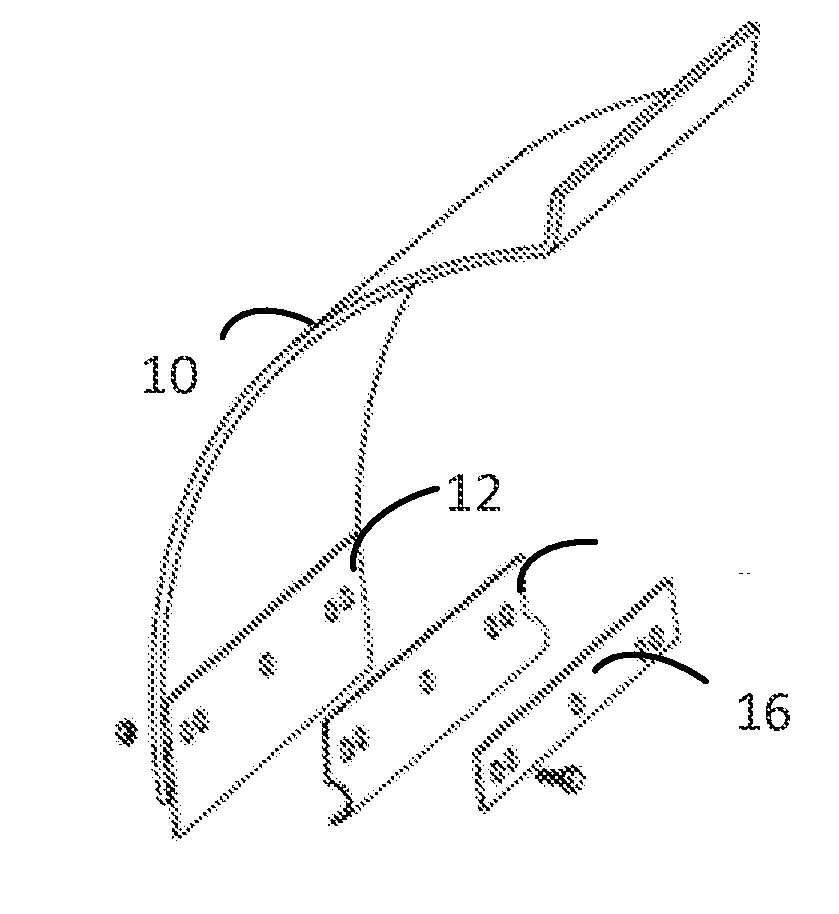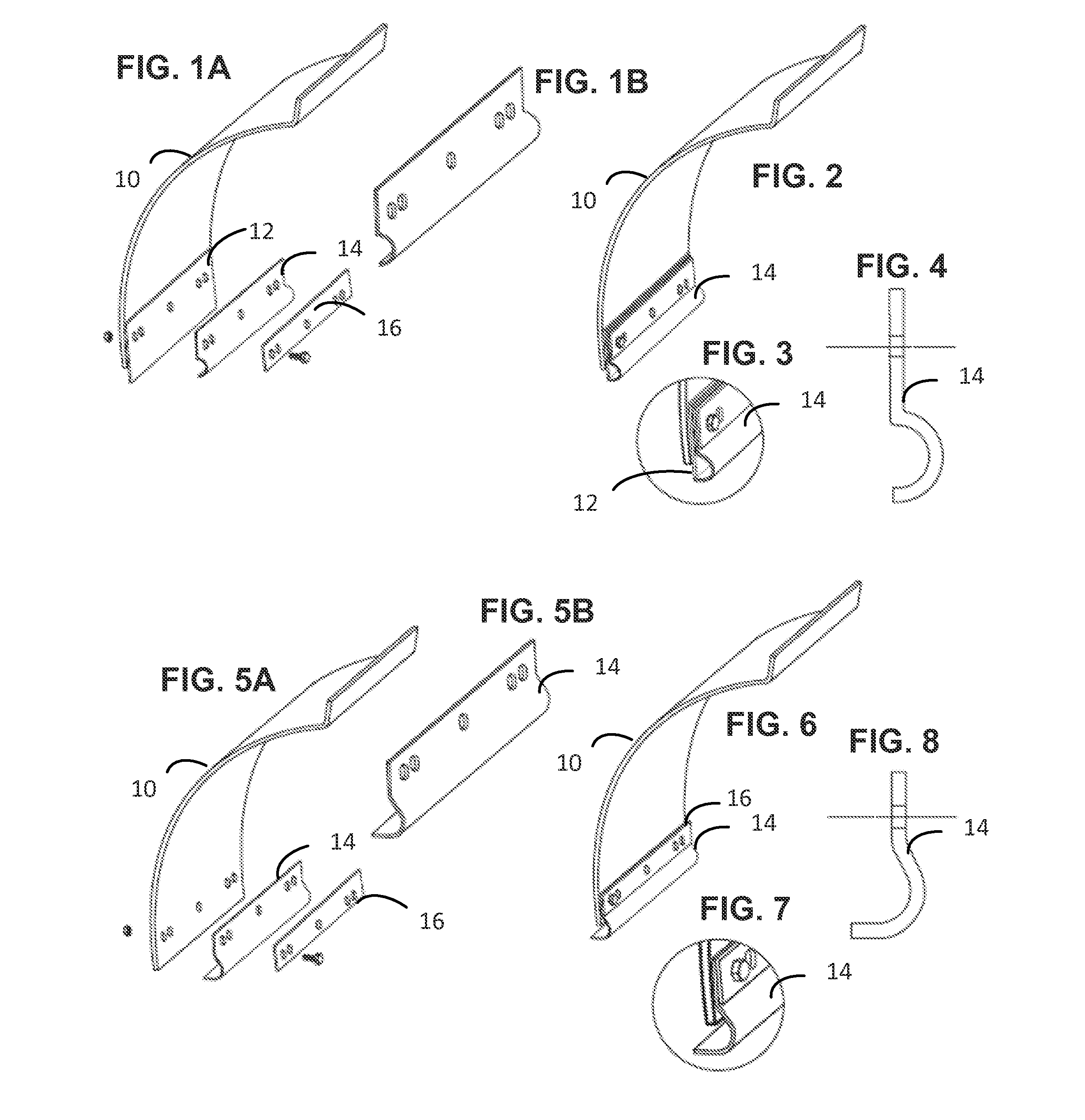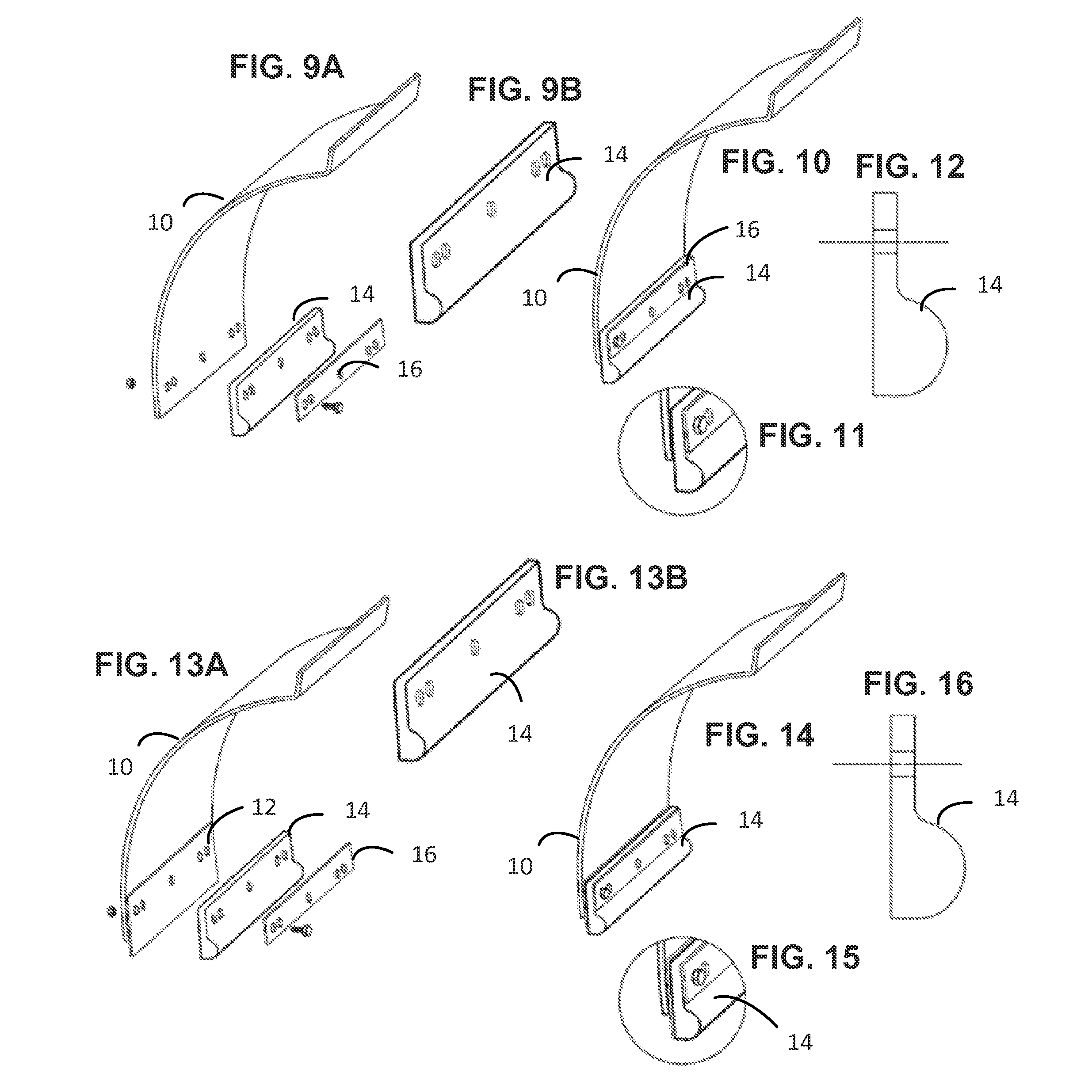Cutting edge attachment for snow plow
a technology for snow plows and cutting edges, which is applied in snow cleaning, way cleaning, construction, etc., can solve the problems of prolonging the life of equipment, becoming very expensive to repair if repairable at all, and reducing the service life of equipment, so as to improve service life and reduce the cost. , the effect of improving the service li
- Summary
- Abstract
- Description
- Claims
- Application Information
AI Technical Summary
Benefits of technology
Problems solved by technology
Method used
Image
Examples
first embodiment
[0035]Referring to FIGS. 1A through 4, a first preferred embodiment of this invention will be described. FIG. 1A shows a customary plow blade mold board 10, and a traditional cutting edge blade 12, both of which are provided with mounting holes of a standard pattern for a particular type of plow mold board. A rounded cutting edge 14 in accordance with this invention is shown spaced from the traditional cutting edge blade 12. The rounded cutting edge has a flat upper section and a lower curved section with a 180 degree radius. A reinforcing plate 16 is shown spaced from the rounded cutting edge 14. Both the rounded cutting edge 14 and the reinforcing plate 16 are provided with mounting holes conforming to the standard pattern of the plow mold board on which they are mounted. As shown in FIG. 2, the rounded cutting edge 14 and the reinforcing plate 16 are secured to the plow blade mold board 10, the traditional cutting edge blade 12, by fastening devices shown as bolts. The bolts, one...
second embodiment
[0037]Referring to FIGS. 9A through 12, a second preferred embodiment of this invention will be described. FIG. 9A shows a customary plow blade mold board 10, with the traditional cutting edge blade removed. A rounded cutting edge 14 in accordance with this invention is shown spaced from the plow mold board 10. A reinforcing plate 16 is shown spaced from the rounded cutting edge 14. As shown in FIG. 14, the rounded cutting edge 14 and the reinforcing plate 16 are secured to the plow blade mold board 10, by fastening devices shown as bolts. The bolts pass through holes previously provided in the plow blade mold board 10 for mounting the traditional replaceable cutting edge blade 12. As best shown in the enlarged end view of FIG. 11, the free end of the rounded cutting edge 14 extends below the lower edge of the plow mold board 10. Enlarged perspective and end views of the rounded cutting edge 14 are shown in FIGS. 9B and 12. In this second embodiment of the invention, the rounded cut...
fourth embodiment
[0038]Referring to FIGS. 13A through 16, a fourth preferred embodiment of this invention will be described. FIG. 13A shows a customary plow blade mold board 10, and a traditional cutting edge blade 12. A rounded cutting edge 14 in accordance with this invention is shown spaced from the traditional cutting edge blade 12. A reinforcing plate 16 is shown spaced from the rounded cutting edge 14. As shown in FIG. 14, the rounded cutting edge 14 and the reinforcing plate 16 are secured to the plow blade mold board 10, the traditional cutting edge blade 12, by fastening devices shown as bolts. The bolts pass through holes previously provided in the plow blade mold board 10 for mounting the replaceable traditional cutting edge blade 12. As best shown in the enlarged end view of FIG. 15, the lower end of the rounded cutting edge 14 is aligned with the lower edge of the traditional cutting edge blade 12. Enlarged perspective and end views of the rounded cutting edge 14 are shown in FIGS. 13B ...
PUM
 Login to View More
Login to View More Abstract
Description
Claims
Application Information
 Login to View More
Login to View More - R&D
- Intellectual Property
- Life Sciences
- Materials
- Tech Scout
- Unparalleled Data Quality
- Higher Quality Content
- 60% Fewer Hallucinations
Browse by: Latest US Patents, China's latest patents, Technical Efficacy Thesaurus, Application Domain, Technology Topic, Popular Technical Reports.
© 2025 PatSnap. All rights reserved.Legal|Privacy policy|Modern Slavery Act Transparency Statement|Sitemap|About US| Contact US: help@patsnap.com



